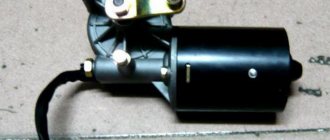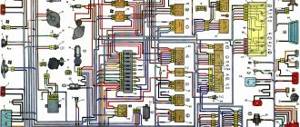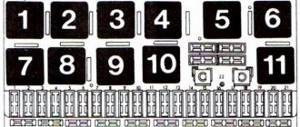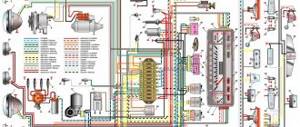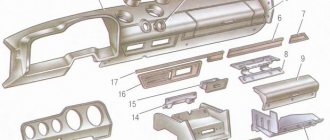Every car has a windshield washer. In other models it is not even present in a single copy. For example, a washer can moisten not only the windshield, but also the rear window, and even the headlights.
It is foolish to underestimate the importance of this mechanism. After all, clean glass is the key to confident and safe driving in comfortable conditions for the driver.
Unfortunately, due to frequent use, the washer may break, which will present a very unpleasant surprise to the car owner. Problems with this device can be caused by various reasons. And in any case, they should be eliminated as soon as possible.
During what period is it most likely to lose a “healthy” washer?
Most often, this device fails due to the frequency of use. Therefore, we can predict what time is the most unfavorable for this device.
One of these periods is the time of mud and slush. For others, it’s a time of heat and dust. In both cases, the driver wets the glass as often as possible to get rid of unpleasant contaminants, and a significant load is placed on the washer motor.
How does the washer work?
To talk about what can break in this device and how to fix it, you need to figure out what parts this device consists of. I must admit that it is quite simple to put together.
Tank
The first link in the glass wetting process chain is the plastic tank. In most cars it is located under the hood. However, there are also cars in which, to get to the water tank, you have to climb under the wing.
There are tanks of different capacities. The most common ones are those whose volume reaches 2.5–5 liters. It seems that this is not much, but this amount of liquid will last the driver for a long time. Water is poured into the tank. That's where it is stored.
Injectors
A thin branched tube is attached to the tank, which stretches to the nozzles. The nozzles or sprayers are installed opposite the glass. Water splashes out of them in small doses, from where it is rubbed over the surface with brushes.
Pump
How does water flow from the tank to the nozzles? A small electric pump is responsible for this. It is powered by a battery and uses an impeller to pump liquid from the tank to the outside.
The windshield washer motor is perhaps the most important element of the washer system and its failure leaves the glass without the ability to wet.
Causes of washer malfunction
If the windshield washer does not work, it will not be difficult for an experienced driver to identify the cause of such a malfunction, and even a beginner, after familiarizing himself with the main failures in the cleaning system, will be able to eliminate them on his own.
Mechanical problems
The most important reason, as mentioned above, may be the lack of washer fluid; in this case, you just need to top it up. If it is present, but does not splash in the winter, then perhaps it is simply frozen. In this case, the problem can be solved in one of two ways:
- warming up the engine;
- bringing the car into a warm garage.
This is interesting: TOP 8 popular garage alarms and criteria for choosing a security system
After the liquid has thawed, the system will begin to operate as usual, but it is better to drain the water from the tank after this and replace it with an “anti-freeze” one.
Other significant mechanical reasons why the windshield washer does not spray include:
- Clogged injectors . Their exit can be blocked by various debris: rust, dirt or small particles. To check the correctness of the guess, you need to stop the supply of working fluid to the nozzles; if this is the case, then the supply of “anti-freeze” will be normal. The solution to this problem lies in replacing the nozzles.
- Disconnecting the hose . It may simply fly off while driving on bumpy roads, and then the fluid supply will continue, but the headlight and windshield washer nozzle will remain dry. Sometimes this happens in cars in which the connecting fittings are located on the hood, then when it is closed, the hoses are squeezed. In any case, the deformed or torn tube must be replaced and returned to its place.
Electrical faults
After checking the fluid level, the cleanliness of the injectors and the hose leading to them, it may turn out that all this has nothing to do with it, then the issue is for the following reasons:
- Fuse blown . You will need to find the safety block and check the insert; it can be found using the attached diagram, which is usually printed on the cover or in the car’s operating instructions. After checking, if this is indeed the reason, then you need to replace the damaged part
- Motor failure . To establish the accuracy of your guess, you should connect a multimeter to the motor terminals and check the voltage when you turn on the washer. If the voltage indicator is normal, but the motor remains inoperative, then the problem lies with it. You can determine which motor has failed by elimination, by moving the pump terminals from the windshield to its rear counterpart.
- Washer switch malfunction . It is usually located on the steering wheel. If, after checking the voltage, it is missing, and replacing the motor with a new unit did not help, then it turns out that the windshield washer switch or relay is not working. Only an experienced auto electrician can accurately diagnose a breakdown.
- Oxidation of pump terminals . During operation, they can not only oxidize, but also completely fall off, which is why the motor stops pumping liquid. To return everything to working condition, you need to clean the oxidized terminals or replace them with new ones.
This is interesting: Internal CV joint of the Skoda Octavia A5
What in the washer can break?
If the windshield washers do not work, it means that a failure has occurred in one of the sections of the system described above. Let's look at what problems with the glass washer may be associated with.
Pump
The pump motor is the part of the washer system that wears out very quickly due to frequent operation.
Unfortunately, you can understand that something is wrong with this device only when water stops flowing to the nozzles. Otherwise, it does not show its malfunctions in any way.
Pump repair method:
Two common ailments can affect the motor:
- corrosion;
- abrasion or breakage.
If corrosion of this device is your case, do not worry. Experienced motorists can easily cope with it with a simple eraser.
But if this mechanism is erased or broken, it will have to be pulled out and replaced with a new one.
You can understand that the pump is the cause of the problem by the absence of a characteristic sound. If you press the washer lever and do not hear the usual buzzing sound, it means that the pump motor is not working.
Often windshield washer malfunctions are associated with the breakdown of this particular part. We'll tell you how to replace it a little later.
Blockage
Also, water may stop flowing to the nozzles due to blockage. The fact is that the tubes through which the liquid flows are very thin and the debris that accumulates in them can cause obstruction. To combat this defect, the system will have to be flushed and possibly purged.
Torn hoses
Another reason could be that the hoses have lost their integrity. If the tubes become leaky, water will not get from point A to point B, just like if it is clogged.
No current
And another common reason is lack of nutrition. Check that the pump and accumulator shafts are securely fastened. Perhaps the motor is simply not receiving energy.
There are also terminals on the motor that could have oxidized or fallen off. Check them out.
There is also a windshield washer fuse on the motor with a power of about ten amperes. If the pump motor fails, this fuse may need to be replaced.
Ice
If problems are discovered during the cold season, it is possible that the water in the tank has simply frozen. You can fix this with a hairdryer. And it’s better to immediately fill in the “anti-freeze”, because due to frequent expansion under pressure of water that has turned into ice, the plastic container may burst.
Reasons for stopping the windshield washer pump
Evidence that the washer pump has stopped functioning is the cessation of flow of working fluid to the surface of the glass (provided that other possible malfunctions described earlier have been previously checked).
The main malfunctions that a car owner can fix on his own are:
- Loss of connection between the motor shaft and the pump shaft.
- Poor contact between the motor commutator and the brushes.
If attempts to restore the pump's operation are futile, it must be replaced. How to do it? This procedure is quite simple and can be performed by a car enthusiast independently. So, we change the washer pump:
- We find the location for installing the tank, since its placement is not only individual for each car model, but can also be hidden by protective elements of the body.
- Disconnect the negative terminal of the battery, turning off the power to the car.
- Disconnect the pump power supply.
- Remove the hose from the fitting and drain the working fluid.
- Using a screwdriver, we disconnect (push out) the intake and the seal sleeve.
- We dismantle the pump.
- We replace the seal bushing with a new one, since it is the violation of its functional characteristics that, as a rule, causes the pump to fail.
- We perform the steps described above in reverse order.
- We fill the washer system with working fluid.
Attention! When using ordinary water as a working fluid in the summer, observe the following requirement. With the onset of a period characterized by negative ambient temperatures, completely drain the water, rinse the system and fill it with special frost-resistant liquids.
Reanimating the washer system
How to replace the motor?
Unfortunately, this part is quite difficult to repair. And often replacing a windshield washer pump is even cheaper than fixing an old one. Therefore, it is better to immediately order a new part and not have to worry about repairs.
Replacing the washer pump:
Replacing the device is easy:
- Before you begin replacing, remove all remaining fluid from the reservoir.
- Locate the contact connecting the pump to the battery. Carefully disconnect the power.
- The next point is optional. You can disconnect the tank by unscrewing the bolts that secure it. However, if manual dexterity allows you to manipulate the fixed tank, you can do without dismantling it.
- Remove the electric pump from the tank and unscrew the tubes.
Attention! Remember where and which hose was screwed on. In the future, they will have to be placed clearly in their places.
- So, now we take out a new pump and connect it to the system.
- Screw the tubes back into place.
- If the tank has been dismantled, put it in place and tighten the bolts.
- We connect the contact from the battery so that the motor has something to power from.
- Fill the water back.
Then press the washer lever. If there is a buzzing sound, it means the motor is running.
How to clean injectors?
For washing, prepare a special caustic solution. To do this, take purified water without chlorine and add vinegar. The ingredients must be mixed in a one to one ratio. Stir the resulting liquid well.
Pour the solution into the tank. Press the washer lever. It's okay if no water gets on the glass. The main thing is that the liquid reaches the blockage. Leave the system in this state for two hours. After that, try pressing the lever again. If water appears, drain the caustic solution and rinse the tubes with distilled water.
If water does not flow, but you are sure that the cause of the problem lies in a blockage, press the lever again and leave the acidic liquid for another two hours, then check again.
